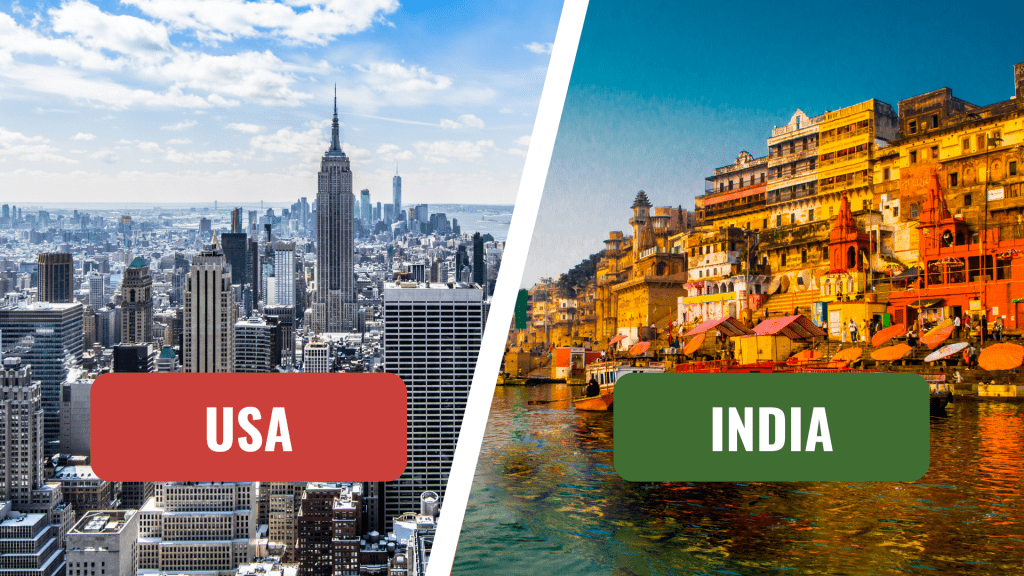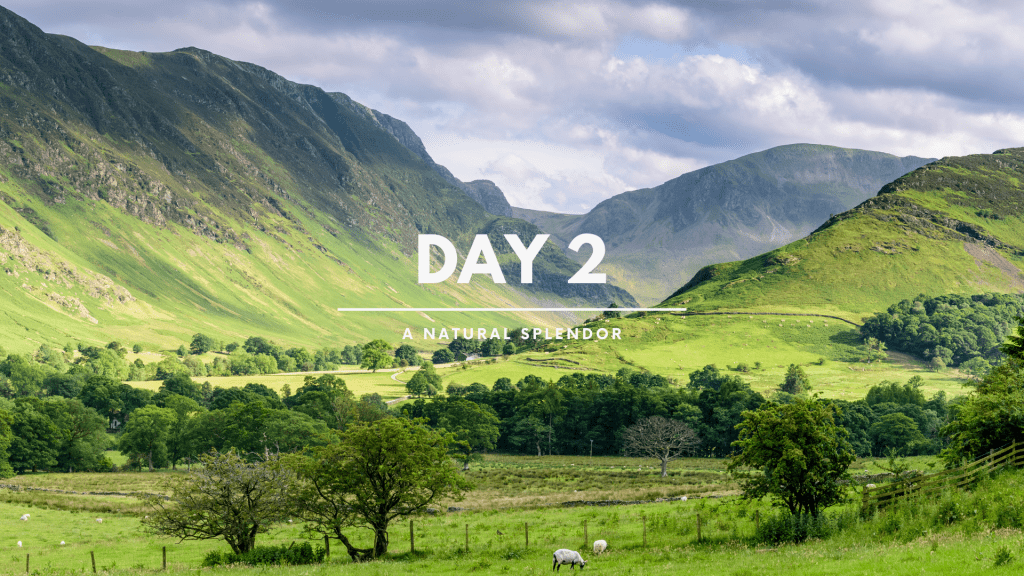The debate about life in the US vs India is one that has intrigued many, especially those considering a move abroad. Both countries offer unique lifestyles, opportunities, and challenges, making the comparison an interesting one. At WeBlogTrips, we aim to delve into these aspects to help you make an informed decision. From cost of living and safety to education and cultural differences, let’s explore every angle.
1. Gun Culture and Safety
One of the most notable differences between life in the US vs India is the issue of safety, particularly regarding gun culture.
- Life in the US: The US has a deeply rooted gun culture, with the Second Amendment allowing citizens the right to bear arms. According to recent statistics, there are over 120 guns per 100 residents, the highest gun ownership rate globally. However, this freedom comes at a cost:
- Gun-related deaths: The US records over 45,000 gun-related fatalities annually, including homicides, suicides, and accidental shootings.
- Public safety: Mass shootings have become an unfortunate reality, making safety a concern in schools, public spaces, and workplaces. While some states enforce stricter gun laws, the overall prevalence of firearms can be unsettling for newcomers.
- Life in India: In stark contrast, India’s stringent gun control laws significantly reduce gun violence. Firearms are tightly regulated, and civilians must demonstrate a genuine need for self-defense or security to obtain a license.
- Gun-related deaths: India reports far fewer gun-related fatalities, with figures hovering around 1,400 annually.
- Public safety: While India’s streets are safer from gun violence, other safety concerns like road accidents and petty crimes are more prevalent.
For those prioritizing personal safety, India’s stricter firearm regulations provide a sense of security that is often lacking in the US.
2. Cost of Living
The cost of living is a crucial factor in comparing life in the US vs India, as it directly impacts lifestyle and savings.
- Life in the US: The US offers higher salaries, but the cost of living is substantially higher. Here’s a breakdown:
- Housing: Rent for a 1-bedroom apartment in cities like New York or San Francisco can exceed $2,500/month, while suburban areas range between $1,200-$1,800/month.
- Healthcare: With no universal healthcare, the average annual premium for family insurance exceeds $20,000, and out-of-pocket costs for a doctor’s visit range between $100-$300.
- Daily expenses: Groceries for one person cost around $300-$500/month, and utilities add another $100-$200/month.
- Life in India: India’s cost of living is far more affordable:
- Housing: A 1-bedroom apartment in Mumbai costs around ₹50,000/month ($600), while smaller cities like Jaipur offer options as low as ₹20,000/month ($240).
- Healthcare: High-quality private healthcare is available for as little as ₹500-₹2,000 ($6-$24) per visit.
- Daily expenses: A family can comfortably manage on ₹50,000-₹80,000/month ($600-$1,000), including groceries and utilities.
While salaries in the US are higher, the lower cost of living in India often makes it easier for middle-class families to maintain a comfortable lifestyle.
3. Work-Life Balance
Work culture is another significant factor in the life in the US vs India debate.
- Life in the US: The US is known for its productivity-driven culture. A typical workweek ranges from 40 to 50 hours, with many employees prioritizing career advancement. However, remote work and flexible hours have gained traction post-pandemic.
- Vacation days: Paid vacation days are limited, averaging 10-15 days annually, which may affect work-life balance.
- Job security: Employment in the US is often at-will, making layoffs a common occurrence.
- Life in India: In India, work-life balance varies by sector. While IT and finance professionals often work long hours, government jobs and smaller firms generally have shorter workweeks.
- Vacation days: Employees in India typically enjoy more holidays and leave options.
- Social support: A strong familial culture provides emotional backing, easing workplace stress.
4. Education
Education systems in the US and India differ significantly in structure and accessibility.
- Life in the US: The US boasts some of the world’s top universities like Harvard and MIT. However, the cost of higher education is prohibitive:
- Tuition fees: Annual costs range from $20,000 to $50,000, making student loans a necessity for most.
- Public schools: While free, the quality of public education varies widely by location.
- Life in India: India’s education system is more affordable but highly competitive:
- Tuition fees: Prestigious institutions like IITs and IIMs charge significantly less, but admission is challenging.
- Public vs private schools: Many families opt for private schools due to the inconsistent quality of public education.
5. Income and Employment Opportunities
The potential for career growth is a key factor in comparing life in the US vs India.
- Life in the US: The US offers lucrative salaries, particularly in sectors like technology, healthcare, and finance. For example:
- Software engineers: Earn $100,000-$150,000 annually.
- Healthcare professionals: Can earn upwards of $200,000 annually, depending on specialization.
- Life in India: Salaries in India are lower but sufficient for the cost of living:
- Software engineers: Earn ₹10-₹20 lakhs annually ($12,000-$24,000).
- Healthcare professionals: Earn ₹2-₹5 lakhs annually ($2,400-$6,000).
6. Standard of Living
The quality of life in the US is often perceived as superior, but it comes with trade-offs.
- Life in the US:
- Infrastructure: Better roads, public transport, and amenities.
- Cleanliness: Public spaces are well-maintained.
- Stress factors: High living costs and gun culture.
- Life in India:
- Community support: Strong familial ties and festivals add emotional richness.
- Challenges: Traffic congestion, pollution, and inconsistent infrastructure.
7. Social Life and Entertainment
Social life varies significantly in the life in the US vs India debate.
- Life in the US: The US offers diverse cultural and entertainment options, including:
- National parks, museums, sports events, and music festivals.
- Socializing is more individualistic and centered around hobbies.
- Life in India: India’s social life revolves around family and community:
- Festivals like Diwali, Holi, and Eid foster a sense of belonging.
- Entertainment options include movies, street food, and cultural events.
Who Benefits Most?
In both countries, the rich often benefit the most:
- Life in the US: Wealthier individuals enjoy better healthcare, premium education, and greater financial security.
- Life in India: While the rich thrive with access to private amenities, the middle class often struggles with rising costs and limited opportunities.
Conclusion
The choice between life in the US vs India depends on your priorities. While the US offers higher incomes, better infrastructure, and global opportunities, it also comes with challenges like gun culture and high living costs. India, on the other hand, provides affordability, strong community bonds, and a vibrant culture but faces issues with infrastructure and competition.
At WeBlogTrips, we strive to provide nuanced insights into such comparisons. Whether you’re planning to move abroad or considering returning home, understanding these differences is key to making the right decision.
About Us
- Akhil Boddu’s YouTube Channel – Follow my vlogs for personal experiences and tips.
- Code With Me YouTube Channel – Explore tech tutorials and coding advice.
- Weblog Trips LinkedIn – Connect with me on LinkedIn for more insights and discussions.
If the information you are looking for is not available here, please contact us. Additionally, follow us on our social media platforms for updates and more information.







